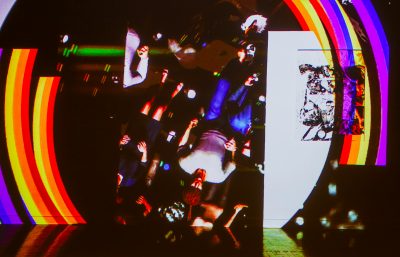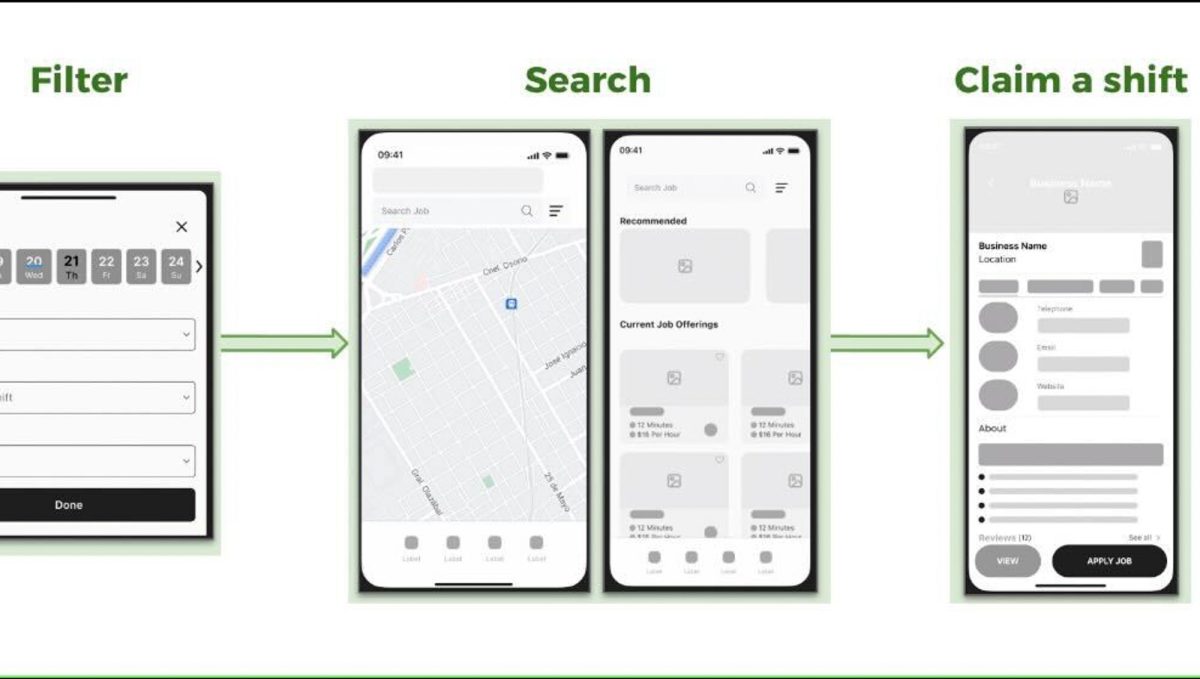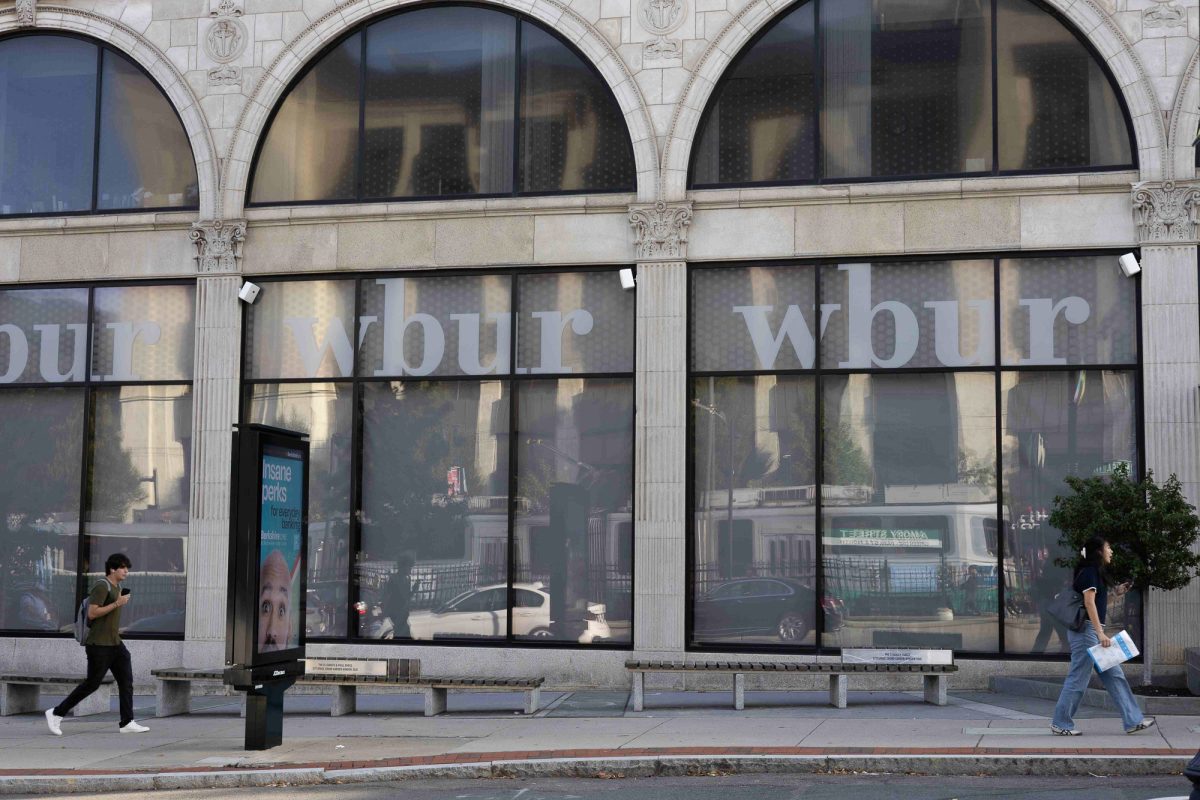A karaoke machine visually representing the concept of breath in poetry, shattered light boxes containing hidden words behind the broken exterior and collages repurposing an archived ‘70s hairstyle advertisement into a representation of the artist himself. In a presentation of his constant pursuit of ideas and projects, artist Jibade-Khalil Huffman opened the doors to his creative world Tuesday at Boston University’s School of Visual Arts.

Huffman took on the title of ‘Visiting Artist’ at this week’s Tuesday Night MFA Lecture Series, presenting his creations via projector.
The lecture was part of an annual series where visiting artists help expand the conversation surrounding art. David Snyder, a professor of art and sculpture in the College of Fine Arts, helped select Huffman as a speaker with broadening artistic discussion in mind.
“I think that [Huffman’s] work is really challenging but like measure for measure its as challenging as it is rewarding, and it really is loads of both,” Snyder said.
Snyder said he believes artists nowadays tend to feel a pressure to condense the story of their work into clean, logical arguments to fit the market-driven model of today’s art world. For this very reason, he said he finds Huffman’s rejection of that notion is inspiring.
“It’s really rare and unusual to encounter someone who is really looking at the constructs that define the areas of separation between genres of creative practices and challenging them,” Snyder said.
Throughout his career, Huffman has written three poetry books, participated in the 2015-2016 Artist in Residence at the Studio Museum in Harlem and received awards, including the Grolier Poetry Prize and the Jerome Foundation Travel Grant.
As an artist, Huffman does not adhere to any specific label when describing his craft. In his lecture he described his artistic process as being divided into three zones: poetry, photography and hybrid projects and projections.
This mixed style grew out of Huffman’s desire to create art in spite of having limited resources as he worked through graduate school, according to Huffman. He began to incorporate a wide variety of artistic practices into his projects which allowed for him to move fluidly between them, Huffman said.
Gregory Williams, an associate professor of contemporary art at BU, said Huffman’s focus on “overwhelming” displays of materials forces his audience to confront their preconceived expectations about what art, society and the world should be like.
“The College of Fine Arts has really made a concerted effort to give the students, through visiting speakers, a very wide range of approaches to what the studio needs to look like,” Williams said.
Bridget Bailey, a first-year graduate student studying painting in CFA, said listening to Huffman’s artistic process was “rejeuvenating.” She also said she was impressed with Huffman’s background as a writer and his career shift to a visual artist.
“[His artwork] gives you energy because a lot of times [artists] are working in a way that is totally different than you’ve been working but there are common threads,” Bailey said.
In terms of what non-art professionals can gain from Huffman’s work, according to Snyder, Huffman is not simply critiquing boundaries in the art field but the boundaries everyone encounters every day.
“He is pointing directly at the subtle tyranny of one’s expectations both in art and in a broader sense, socially, politically,” Snyder said.
Huffman said after his lecture he is continuously “engaged and inspired” by his studio visits because of the conversations they promote about art as a whole. In his eyes, he said, students have a valuable opportunity in academic settings to think deeply.
In some ways, according to Huffman, they are never more free.
For Snyder, the Tuesday Night MFA Lecture Series is somewhat underappreciated in regards to the sheer talent it brings onto campus.
“I would describe it as a hidden gem,” Snyder said. “In terms of the range and vibrancy of voices that materialize as part of this series, I would say that it is consistently unmatched within the city.”




















































































































Susan McHugh • Sep 20, 2019 at 10:40 am
This is a very informative and descriptive article on an artist previously did not know. I appreciate this well written red feature.